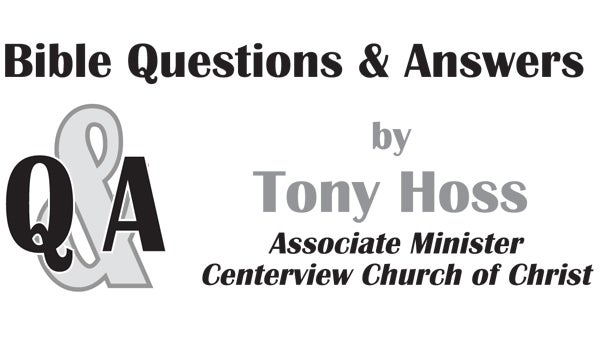How were early churches different from modern-day houses of worship
Published 3:04 pm Thursday, December 30, 2021
|
Getting your Trinity Audio player ready...
|
BY CAREY KINSOLVING & FRIENDS
“They didn’t have air conditioning, carpet or nothing,” says Dylan, age 5. Actually, it was “the way the seats were lined up,” says Milese, 6. No, that wasn’t it at all: “because there were no chairs back then,” says Halie, 6.
You all missed it, says Hannah, 6: “They did not have toys back then or church dresses.”
Many interesting answers, but Gracie, 7, wins the award for the most thought-provoking: “Church was different back then because they didn’t have one.”
Say what? What’s a church without a church?
The first-century church spread around the world without church buildings. Most people think of church as a building with a certain style of architecture. When the Bible refers to the church, it’s not about buildings. Rather, it’s all about a spiritual building called the body of Christ and the bride of Christ.
That spiritual building consists of all who have ever believed in the Lord Jesus Christ as their savior. “Living stones” is the Apostle Peter’s metaphor for Christians. They are the building blocks that make up this living organism called the church. To call any building a church is a misnomer (Ephesians 2:19-22 and I Peter 2:4-5).
When believers assemble in the name of Christ as a church in a particular location, they are local expressions of the universal church. In the early church, Christians met in houses, in fields and even in the Roman catacombs.
“In the first century, they didn’t have churches, but every day in their homes, they praised God, broke the bread and drank the wine,” says Jimmy, 11. “Now we do all of that, and more, but we gather our community together and rejoice in one building.”
Jimmy, your church sounds fantastic. But many who assemble aren’t so fortunate, says Mikelle, 11: “In the early church, all the members were alike and together. They met at the church every day and even had meals together. Today, we may know a few other members of the church, but we don’t even know everyone’s names. We certainly don’t see them every day.”
“In the old days, they went from house to house having dinner,” says Braxton, 7. “Today, we have different churches that talk about God. And we don’t go house to house having dinner no more.”
In previous columns, I’ve mentioned that the Lord’s Supper is a fellowship meal. There’s not one instance in the New Testament where the Lord’s Supper is anything other than a meal. By definition, a “supper” is a meal. By reducing the Lord’s Supper to something less than a fellowship meal, we’re missing most of the community aspect of the church that made the New Testament church so dynamic.
“It was different because they split their stuff with others. And every night, they ate at others’ homes,” says Kyle, 7.
The Jerusalem church had a difficult time. It was not easy being a Jewish Christian in Jerusalem, the very place where the Lord Jesus was tried and crucified. In this time of extreme hardship and persecution, Christians came together and sold property so that they had all things in common.
Think about this: The lives of Jerusalem Christians spoke to people’s hearts to the point where the Scripture records: “And the Lord added to the church daily those who were being saved” (Acts 2:47).
Memorize this truth: “And they continued steadfastly in the apostles’ doctrine and fellowship, in the breaking of bread, and in prayers” (Acts 2:42).
Ask this question: Do you need to rethink church?
(Kids Talk About God is designed for families to study the Bible together. Research shows that parents who study the Bible with their children give their character, faith and spiritual life a powerful boost.)




